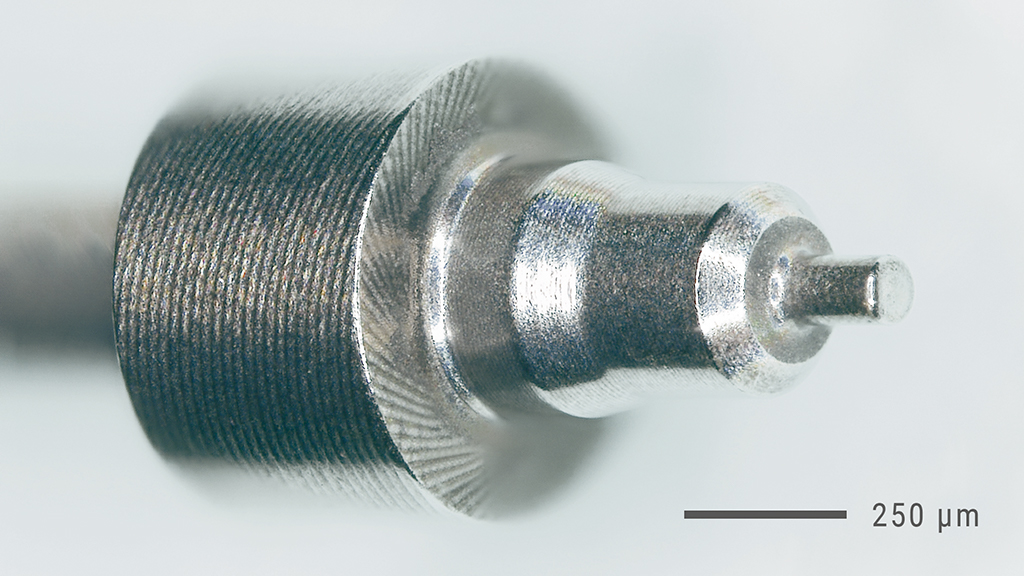Laser micro machining: The GL.smart has mastered the art

As the miniaturization of components and parts progresses, along with the use of high-tech materials, conventional manufacturing processes such as grinding reach their limits. With decreasing structural size and increasing demands for precision, burr-free finish, and flexibility, ultra-short pulse lasers can showcase their strengths. Due to their non-contact removal and very low heat input, they offer the best conditions for the required high quality. For years, GFH GmbH from Deggendorf has been one of the global leaders and technological pioneers in the design and construction of high-precision laser microprocessing systems with ultra-short pulse lasers. The company confirms its pioneering role with the launch of the laser microprocessing system GL.smart at this year's GrindTec trade fair in Augsburg.
The new GL.smart, with up to 16 simultaneous axes, represents the all-rounder in the field of laser microprocessing and can fully utilize the flexibility offered by the laser: a single tool rotates, drills, cuts, and engraves in one setup, thus manufacturing without the usual loss of accuracy resulting from clamping operations.

With up to 16 simultaneous axes, the new GL.smart represents the all-round talent in the field of laser micromachining and can fully exploit the flexibility that the laser offers.
As the latest machine in the GL series, the GL.smart offers productivity in the smallest of spaces, with dimensions of 2,212 mm x 2,219 mm x 1,026 mm (L x H x W). By using high-performance lasers in combination with beam splitting, simultaneous processing at two stations and thus double output are possible. Additionally, upon request, the machine can be equipped with a bar loader as a loading unit, enabling unmanned operation 24/7 when combined with integrated component handling using a robot.

Thanks to the non-contact removal, the workpiece remains free of force and deformation during the entire machining time. This means that there is no loss of accuracy even with very thin and delicate components.
The development of the GL.smart focused particularly on the possibility of high-precision laser turning. This process, developed by GFH GmbH, enables the production of turned parts with very small diameters. The core of this process is the combination of precise laser ablation using a patented optics system and the workpiece movement on a turning axis with highly accurate concentricity.
Thanks to the non-contact removal, the workpiece remains free of force and deformation during the entire machining time. This means that there is no loss of accuracy even with very thin and delicate components. Furthermore, this method also allows for the easy machining of parts with a large clamping length.

The applications of the new GL.smart are diverse and range from medical technology for the production of micro tools such as tweezers, micro blades or implants to the watch industry for the manufacture of so-called pivots, which are installed in the clockwork.
The precise control of laser parameters adjusts the heat input into the material according to the respective workpiece volume, thereby preventing heat accumulation and the occurrence of thermal stresses and deformations. Furthermore, the surface characteristics achievable in planar laser processing are fully preserved in this machining variant and can even be exceeded.
The application areas of the new GL.smart are diverse, ranging from medical technology for the production of microtools such as tweezers, micro cutting, or implants to the watch industry for manufacturing so-called pivots, which are installed in the movement. The advantages of laser processing lie in the attractive manufacturing times due to the roughing and finishing processes (rough and fine machining) using ultra-short pulse lasers and the non-contact, wear-free machining capability of even the smallest components made from nearly any material.
Laser turning, especially in the manufacturing and processing of precision parts, enables unusually high accuracy, making it capable of replacing other more elaborate methods such as conventional grinding. At the GrindTec 2020 trade fair in Augsburg, the experts from GFH are presenting laser processing as an attractive alternative to the traditional grinding process for the first time at booth 4100 in Hall 4, catering to interested visitors.